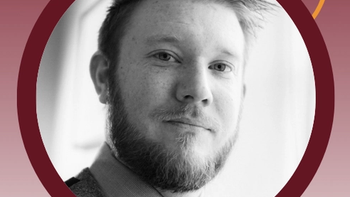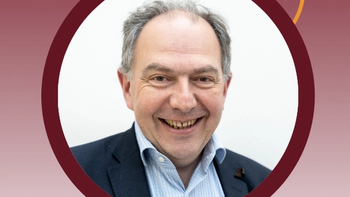
- Applied Clinical Trials-10-01-2003
Into Africa: The EU Puts Its Mouth Where Its Money Is
European Research Commissioner Philippe Busquin tours Africa to bring attention to the plight of developing nations unable to afford modern medicines.
As I write this column, two European Union actions to improve drug treatment in the developing world are taking place. One is the assertive EU interventions at the World Trade Organization to ease the supply of generic medicines to poorer countries. The finalization of negotiations on this complex subject was greeted by European Trade Commissioner Pascal Lamy as having taken “too many months to complete,” but finally showing that “the WTO can respond flexibly and pragmatically to the concerns of developing countries and contribute to the fight to combat killer diseases.”
The other action, more directly related to clinical trials, involves Lamy’s colleague, European Research Commissioner Philippe Busquin. He is in southern Africa to raise the profile of the European and Developing Countries Clinical Trials Partnership (EDCTP) and to encourage African countries to mobilize around the initiative.
The EDCTP program, launched last year, was described in some detail in this column in November 2002—but in short, it is an initiative to combat HIV and AIDS, malaria, and tuberculosis backed by ‚200 million of European Union money. The European Commission is supporting a long-term partnership between Europe and developing countries for the development of new medicines and vaccines against these three diseases by facilitating and accelerating clinical trials. And the EU member states will contribute at least another ‚420 million.
Now, Commissioner Busquin has decided to put his mouth where his money is. Recognizing that providing funding is not enough, he has gone to Africa to visit key research sites and meet ministers in Tanzania, Mozambique, and South Africa, in particular at a WHO meeting in Johannesburg where he is addressing the Ministers of Health of African States.
According to Busquin:Research into treatments for diseases doesn’t just mean working in laboratories, it also means working with the victims in their own communities. By visiting some of the hardest hit parts of Africa, I hope to highlight what the clinical trials program means in real terms.
European countries working in partnership with developing countries and the pharmaceutical industry to reduce suffering and poverty is a fine concept, the Commissioner says. But “African and European countries must unite in their efforts to share expertise and build genuine political consensus, together driving forward long-term policies and programs to tackle HIV and AIDS and other poverty-related diseases.”
Conscious that 95% of deaths from these three diseases are in the developing world, and that 90% of these deaths are in Africa, the clinical trials program is initially targeting that continent as its top priority.
EDCTP foresees increased collaboration among European countries, among developing countries, between the northern and southern hemispheres, and with the pharmaceutical industry. It is focusing on developing new interventions that are appropriate for the African population by doing clinical research in Africa, where African scientists play a crucial role. But it also urges that development aid should be directed into the fight against poverty, through substantial investment in research and training, and by sharing expertise, infrastructures, and results.
Busquin’s trip takes him initially to Dar-Es-Salaam in Tanzania, where he meets Anna Abdallah, Minister for Health. Then, in Mbeya, in the southwest of the country, he visits a state-of-the-art clinical research facility focusing on HIV and AIDS. This is the medical research program set up in 1988 with the German Agency for Technical Cooperation and Munich University. The center is involved in the EU-funded HIV Superinfection Studies (HISIS) trial, based on a cohort of 600 women who are examined regularly over a three-year period, with interview and medical examination, counseling, and medication if needed.
And while in Mbeya, the Commissioner is visiting Kihumbe, a nongovernmental organization that provides education and advice for out-patients, assists people in home-based care for AIDS patients, supports affected families, and works to mobilize and educate the community on voluntary counseling and testing to reduce HIV spread. He is also seeing the HISIS project’s follow-up mobile clinic and dispensary in a small, rural village, Igurisi.
From Tanzania, Busquin goes to Maputo in Mozambique, where he meets the prime minister as well as EU ambassadors, and takes a car ride to Manhiça to see the facilities at the local Health Research Center—including a demographics and data management center and a bacteriology laboratory. Projects underway there include a malaria vaccine trial involving 2000 children, a pregnancy intermittent treatment for malaria, and an HIV and AIDS mother-to-child program. The final stage is a visit to Johannesburg in South Africa to visit a public/private research partnership for TB research.
Cynics may say that Commissioner Busquin might just as well live in Africa for all the use he is in Europe, particularly now that the EU’s research program that he is responsible for is at last up and running. But even if the research portfolio in the European Commission (and its incumbent) does not enjoy quite the same prestige as the politically more influential Commission portfolios such as economic and monetary union or competition policy, Busquin’s initiative is not to be dismissed so lightly. This is a hands-on visit (with an international press entourage accompanying him) that will throw some light onto what the EU is doing in this desperately needy corner of the world. And it should confer some added significance on the EU’s practical involvement in clinical trials and development aid at the local level, rather than in the physically more comfortable world of politics and regulatory affairs.
Reflections back home
Meanwhile, the European political and regulatory reflections on clinical trials continue back home. One of the most recent outcomes is a report on how the EU orphan drugs rule (
) has functioned since it came into force on 28 April 2000.
After three years, the European Commission has decided to clarify some questions on the implementation of the designation and market exclusivity provisions of the rules, providing guidance to the EMEA (European Agency for the Evaluation of Medicinal Products), the member states, the pharmaceutical industry, and other interested parties.
For instance, in the case of a medicinal product intended for the diagnosis or prevention of a condition, one of the key criteria for designation as an orphan—the population affected by the condition—may be interpreted in several ways, the Commission observes.If a product for the diagnosis or prevention of a condition is effective, this may result in a decrease in the population actually suffering from the disease or condition to less than five in 10 thousand persons in the European Union [the threshold fixed in the EU rules—Ed].
So, because the objective is to provide incentives for product development, the prevalence calculation in such cases should be based on the population to which such a product is expected to be administered on an annual basis, the Commission has decided.
Similarly, to clarify the criterion that “there exists no satisfactory method of diagnosis, prevention or treatment of the condition in question that has been authorized in the EU,” the Commission is refining its scope. Commonly used methods of diagnosis, prevention, and treatment that are not subject to marketing authorization (for example, surgery and medical devices) may be considered satisfactory methods if there is scientific evidence as to their value. But the assessment as to whether a particular method may be considered satisfactory shall take into account the experience with the method in question, documented results, and other factors including whether or not the method is invasive and/or requires hospitalization.
Demonstrating “significant benefit”
But it is in relation to “significant benefit” that the new Commission guidance is likely to be of most direct interest to the clinical trial community. The EU rule states that where a satisfactory method of diagnosis, prevention, or treatment of the condition exists, the sponsor has to establish “that the medicinal product will be of significant benefit to those affected by that condition”—with “significant benefit” defined as “a clinically relevant advantage or a major contribution to patient care.”
In other words, the applicant for orphan drug designation is required to establish significant benefit compared with an existing authorized medicinal product or method at the time of designation. But “as there may be little or no clinical experience with the orphan medicinal product in question, the justification for significant benefit is likely to be made on assumptions of benefit by the applicant.” It is the job of the authorities (and particularly the EMEA’s Committee on Orphan Medicinal Products) to assess whether or not these assumptions are supported by available data and evidence supplied by the applicant, the Commission points out.
The Commission’s new guidance focuses some of the possible claims more clearly. Considerations such as ease of self-administration may be considered a benefit if the patient is ambulant, it says, but they may not be considered a benefit if the patient is likely to be hospitalized during treatment. And if the argument for significant benefit is based on an increase in supply/availability of the method, the sponsor must provide details of the supply/availability problem and explain why this results in the unmet needs of patients. If the supply of existing methods is sufficient to meet patients’ needs in the orphan indication, an increase in supply will not be viewed as a significant benefit.
A product that is authorized and available in all member states may constitute a significant benefit compared with a similar product that is authorized in only a limited number of member states. But supply problems arising from manufacturing process limitations should be differentiated from those that arise due to cost limitations or healthcare policy. And where supply/availability problems with existing methods are of a transient nature, due for instance to manufacturing problems, it will not be possible generally for sponsors to argue significant benefit based on supply problems unless it can be shown to be a recurring problem or a long-term interruption in supply. Assumptions of significant benefit may also be based, says the Commission, on expected benefits to a particular population subset, including benefits in patients resistant to the existing method and on expectations of a clinically relevant improved safety profile. But the reasons for these expectations must be justified, either by clinical experience or exceptionally by reference to the pharmacological properties of the product. o
Articles in this issue
over 22 years ago
The Electronic Solution to the FDA Submissionover 22 years ago
Regulation and Risk Managementover 22 years ago
eClinical Trials: Planning & Implementationover 22 years ago
Software Life Cycles and Kitchen Sinksover 22 years ago
Forced Randomization: When Using Interactive Voice Response SystemsNewsletter
Stay current in clinical research with Applied Clinical Trials, providing expert insights, regulatory updates, and practical strategies for successful clinical trial design and execution.




